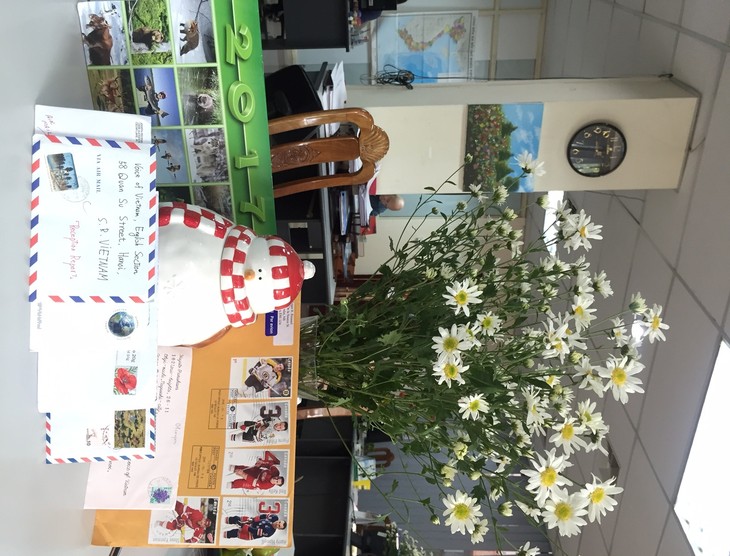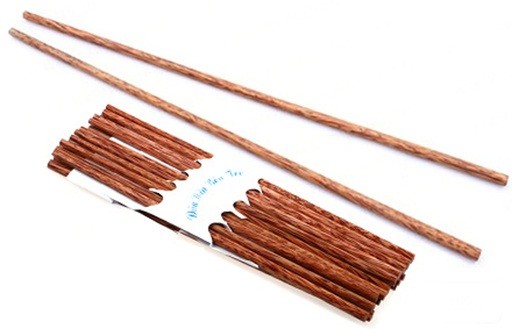(VOVworld) - This week I’m especially impressed by a package from Roger Roussel of Canada. It’s a large envelope with 5 big stamps featuring famous Canadian hockey players. He sent us a calendar, a greeting card, and sticker notes. Thank you very much, Roger, for these lovely.
B: I especially like the stamps. They are so beautiful. These hockey players are all in the Hockey Hall of Fame, a museum in Toronto dedicated to the history of ice hockey. As of 2016, there are 271 players, including four women, and 16 officials, in the Hall of Fame. Seventeen of the honourees were inducted posthumously.
A: We don’t play ice hockey in Vietnam, because of the climate.
B: Yes. I think so. We don’t have a cold winter so we don’t have any sports or games played on snow or ice, such as broomball, figure skating, curling, or speed skating.
A: But we have countless summer and beach games. Children like kite flying, swimming, hike and seek, jacks, spinning tops, the game of squares, and the game of dragon-snake. These folk games improve thinking and observation skills in children. Football, badminton, shuttlecock, and volleyball are most popular games among both children and adults.
B: Indonesia, Alex Torbeni listened to our program on November 22 on a frequency of 9840 khz. He commented: “I’m very interested in listening to the explanation about Vietnam’s fish sauce. In Indonesia, our food doesn’t use fish sauce. However there is fish sauce sold here. The majority of fish sauce is imported from Thailand and there is no Vietnamese fish sauce. There is only one Indonesian fish sauce company.”
A: People in Vietnam and other Southeast Asian countries like Thailand, Laos, and Cambodia are very fond of fish sauce. It is a staple ingredient of numerous dishes in Vietnam.
B: An interesting characteristic of fish sauce is that it loses its fishy odor when it’s once mixed with other ingredients. It is commonly used for cooking and dipping seafood and many other Vietnamese foods. In Vietnam, there are many famous fish sauce brands named after their original location, such as Thanh Hoa, Phu Quoc, and Phan Thiet.
A: Alex wants to know more about Vietnam’s eating habits including the habit of using chopsticks. Is there any difference between the chopsticks of Vietnam, Japan, and China. When were chopsticks first used by Vietnamese people?

Letters from listeners
|
B: Vietnamese use bamboo or wooden chopsticks, which more easily grip the food. Plastic or metal chopsticks are not preferred because they are heavy and slippery. The normal size is about 25 cm long. There are often decorations at one – inlays of mother-of-pearl or lacquer motifs.
A: Chopsticks should be light weight but strong enough to pick up food without a feeling of fragility. For cooking, longer and thicker chopsticks are used to help the cook avoid burning her hands over the stove. These are used instead of a ladle or spatula and are extremely useful when it comes to flipping spring-rolls or other fried foods.
B: Vietnamese chopsticks make great souvenirs. Gift chopsticks are often packaged nicely in a bamboo-case or tied together with a colorful string.
A: Vietnamese follow some universal chopstick etiquette. For example, do not use chopsticks to make noise, hit bowls, point at others, draw attention, or gesture. Do not use chopsticks to impale food instead of gripping it. Do not leave chopsticks standing vertically in a bowl of rice or other food, because they look like incense sticks. Place chopsticks in a right-left direction - with the tips on the left – so they do not point toward others.
B: When eating, you should raise your bowl to your mouth and push the rice into your mouth with the chopsticks. Always use both chopsticks together, even if you’re only stirring something. My grandmother told me that the souls of the deceased use one chopstick. Food should not be picked up from the middle of the table and placed directly into your mouth. Place all food in your own bowl before eating.
 |
Coconut-wood chopsticks for eating and cooking
|
A: Do not transfer food from chopsticks-to-chopsticks, otherwise the food might drop. You can reverse your chopsticks and use the clean to take food from a common plate, but it is even better in this situation to ask for extra chopsticks to transfer the food.
B: That’s the basic etiquette of chopsticks in Vietnam. Now let’s continue to read letters from other listeners. It’s been nearly a year since we received our last letter from Rudolf Sonntag of Germany. Mr. Sonntag says although he can’t write often, he still listens to VOV on shortwave and keeps informed about Vietnam through VOV’s website.
B: We’re very glad to hear from you again, Mr. Sonntag. We’ll send you our QSL card to confirm your report and send you our latest frequency list for the winter. From Pakistan, Kalab Abbas said it’s amazing to learn about Vietnamese culture. He wrote: “I know that Vietnam is a multi ethnic country and the nation has strong unity. I appreciate Vietnam’s celebration of cultural heritage week. This beautiful event promotes the cultural values of Vietnam’s ethnic minorities. VOV’s Letter Box and colorful Vietnam are my favorite shows.”
A: Every week, Richard Nowak of the US sends us multiple reports of transmission quality and his comments on our programs. He said that on November 24th the show on 7315khz was great. The reception was better than the previous day with SINPO rating all 5s.
B: Richard wrote: “The Letter Box show had a wonderful update on all the upcoming festivals, including a worshipping of the Moon. Sounds like there is a variety of festivals coming up in Vietnam. A nice slow female vocalist sang “I love you so”. I also enjoyed last nights’ show with a Society edition on miners’ bread and fish sauce.”
A: From Bangladesh Ashik Eqbal Tokon emailed us on November 25 saying that he has learned something about Vietnamese culture. “ A couple of weeks ago while reading some articles on world poetry in our library, I came across some lines of the Vietnamese poetry. I learned that Vietnam has a glorious history of literary. I learned a lot about Vietnam and the Vietnamese people through my only window the Voice of Vietnam. Now I’ve become interested in your literature, especially Vietnamese poems.”
B: Japanese D’xer Koji Nakayama listened to VOV on November 7 when we broadcast a news item about Hanoi’s ranking among the world’s top tourist destinations. He wrote “Congratulations. I’m very pleased to hear that Hanoi has been honored by being ranked 8th by the prestigious travel organization, Trip Advisor, among the world’s top tourist destinations in 2016. I believe Hanoi attracts tourists for many reasons, including unique culture, impressive landscapes, and delicious traditional cuisine. Not to mention friendly Vietnamese people on motorbike taxis, street vendors, and more. I hope Hanoi and other cities in Vietnam get an even higher rank next year.”
A: This week ee acknowledge letters from Tim Breyel from Malaysia, Rachid Dahmani from Algeria, Hayato Furukawa and Toshiya Nishimura from Japan, David Ansell from England, Samina Gull from Pakistan, and Jordan Heyburn from Northern Ireland. Thank you very much, listeners, for tuning in to our programs and sending us feedback. We’ll verify your reception reports and hope you’ll receive our QSL cards soon. We welcome your feedback at English Section, VOVworld, Voice of Vietnam, 45 Ba Trieu Street, Hanoi, Vietnam. Our email address is englishsection@vov.org.vn. Thank you for listening to VOV on shortwave and for visiting our website. Good bye until next time.